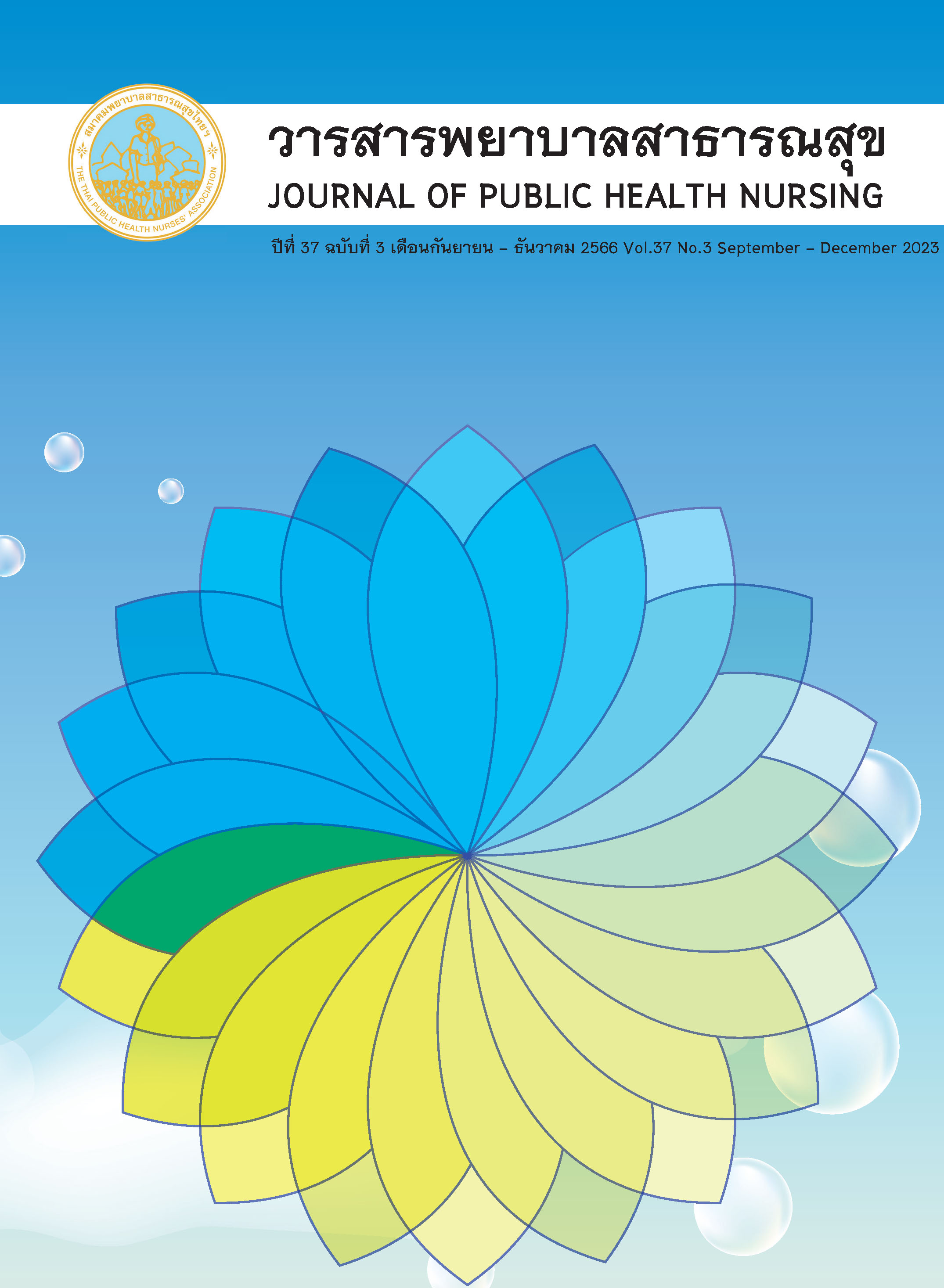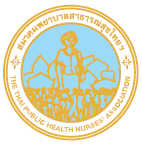Developing and Feasibility testing of Practice Guideline for Surveillance of Stroke in community, Panomthuan district, Kanchanaburi province
Keywords:
stroke, Practice Guideline/ Surveillance/ Stroke Community, Practice GuidelineAbstract
The morbidity and mortality rates of Stroke have consecutively risen worldwide, including Thailand. It is recognized that community engagement played a significant role for an effective Stroke surveillance. This mixed-method study aimed to develop and examine the feasibility of practice guidelines for the surveillance of Stroke in a community. This study consisted of 3 phases. First, the guideline was developed by the researcher, applying the model of community health engagement. The 8 steps of practice guideline were (1) ice-braking, (2) informing objectives, (3) reporting individual health-related data, (4) returning community risk assessment, (5) conducting a group discussion, (6) obtaining permission, (7) selecting a representative of Stroke, and (8) summarizing and making appointments. Second, a total of fifty-four subjects, who met the inclusion criteria were systematically randomized to engage in the practice guidelines for the surveillance of Stroke. Knowledge, attitude, behaviors related to Stroke, Thai CVD risk score, and satisfaction of engagement in the program were assessed by the researcher using questionnaires before and after implementation. Third, the feasibility of using the guideline was collected from 10 subjects who voluntarily joined a focus group discussion.
According to t-test analysis, knowledge, attitude, stroke risk behavior, and Thai CVD risk scores of those subjects after participation in the practice guidelines for the surveillance of Stroke were significantly improved than before participation (p<.001). In addition, it showed that overall satisfaction of samples joining in the program was very good (mean=4.53, SD=0.54). The qualitative results showed that most subjects agreed that this guideline was feasible to help people monitor and surveillance Stroke. They also stated that all people in the community should be invited to participate in the program, and the engagement of community leaders played a significant role in the achievement of the program.
Overall, this practice guideline was feasible to improve knowledge, attitudes, and behaviors by monitoring and surveillance by the community. However, some content and activities should be varied to tailor to the context of different communities before delivering to people effectively.
Key Words: Practice Guideline/ Surveillance/ Stroke/ Community
References
References
Feigin VL, Brainin M, Norrving B, Martins S, Sacco RL, Hacke W, et al. World Stroke Organization (WSO): Global Stroke Fact Sheet 2022. Int J Stroke. 2022;17(1):18–29.
Thiamkao S. Scenario of stroke. Thai J Nuerology. 2021;37(4):54–60.
World Health Organization. Community Health Management A problem-solving approach [Internet]. 2006. 76 p. Available from: https://apps.who.int/iris/bitstream/handle/10665/116500/dsa709.pdf?sequence=1&isAllowed=y
Odugleh-Kolev A, Parrish-Sprowl J. Universal health coverage and community engagement. Bull World Health Organ. 2018;96(9):660–1.
Barker KM, Ling EJ, Fallah M, Vandebogert B, Kodl Y, Macauley RJ, et al. Community engagement for health system resilience: Evidence from Liberia’s Ebola epidemic. Health Policy Plan. 2020;35(4):416–23.
Committee C and TSA (CTSA) CCEKF. Principles of Community Engagement [Internet]. NIH Publication No. 11-7782. 2011. http: ⁄⁄www.cdc.gov/ phppo/pce/. Available from: http://www.atsdr.cdc.gov/communityengagement/pdf/PCE_Report_508_FINAL.pdf
World Health Organization. Community engagement: a health promotion guide for universal health coverage in the hands of the people. In Geneva; 2020. p. 1–48. Available from: https://www.who.int/publications/i/item/9789240010529
Sri-saad B. ฺBasic statistics. 10th ed. Thailand: Suweeriyasarn; 2020. 228 p.
Ministry of Public Health. A handbook of risks assessment to devlop Ischemic Heart disease and Cerebrovacular for Village Health Volunteers. 2nd ed. Thailand: The Printing Office Agency to assist veterans in Royal Shu patham.; 2017.
Nualnetr N, Srikha D. Knowledge on the stroke and behaviors to reduce the risk of stroke among risk persons in Samliam Community, Muang District, Khon Kaen Province. J Med Technol Phys Ther. 2012;24(3):318–26.
Songteh J. Health behaviors contributing to risks of coronary heart disease among Thai Muslim in the Meesuwan 3 community. Thammasat University; 2011.
Bloom BS, Hastings T, Madaus GF. Handbook on formative and summative evaluation of student learning. New York: Mc Graw-Hill Book Company; 1971.
Kumtip P, Jitpanya C. Relationships Among Knowledge, Belief, And Behavioral Awareness In Young Adult At High Risk Of Stroke. J Police Nurse. 2014;06(2):44–55.
Kompilo N. Knowledge, Attitude and Risk behaviours of Stroke among people with hypertension in Maeta hospital, Maeta district, Lampang province. Thammasat University; 2016.
Tijayoung S. The Factors Influencing Preventive Behaviors Amongst Risk Group Stroke Patients. Christian University; 2014.
Jirarattanawanna N, Wattanaamorn S, Ratsamepong S. Community Participation in Health Promotion. Mahachula Acad J. 2019;6:365–81.
Downloads
Published
How to Cite
Issue
Section
License
Copyright (c) 2023 Thai Public Health Nurses Association

This work is licensed under a Creative Commons Attribution-NonCommercial-NoDerivatives 4.0 International License.
บทความที่ตีพิมพ์และแผนภูมิรูปภาพถือเป็นลิขสิทธิ์ของวารสารพยาบาลสาธารณสุข (Thai Public Health Nurses Association)







